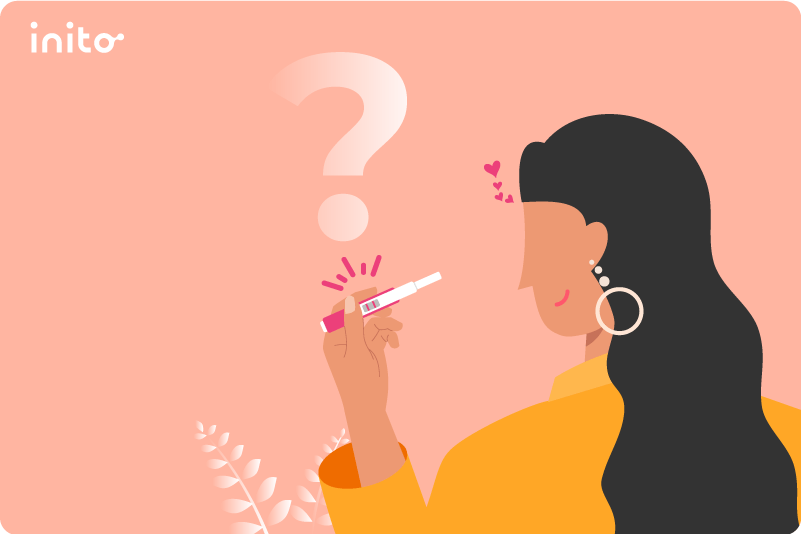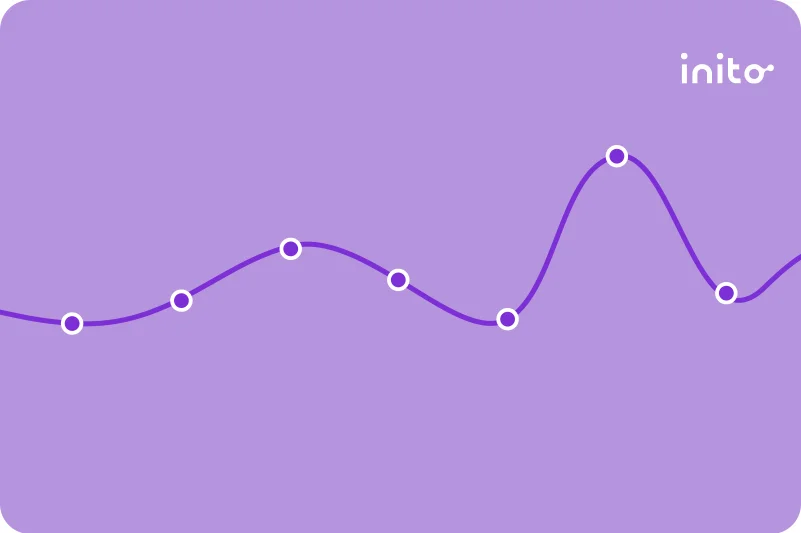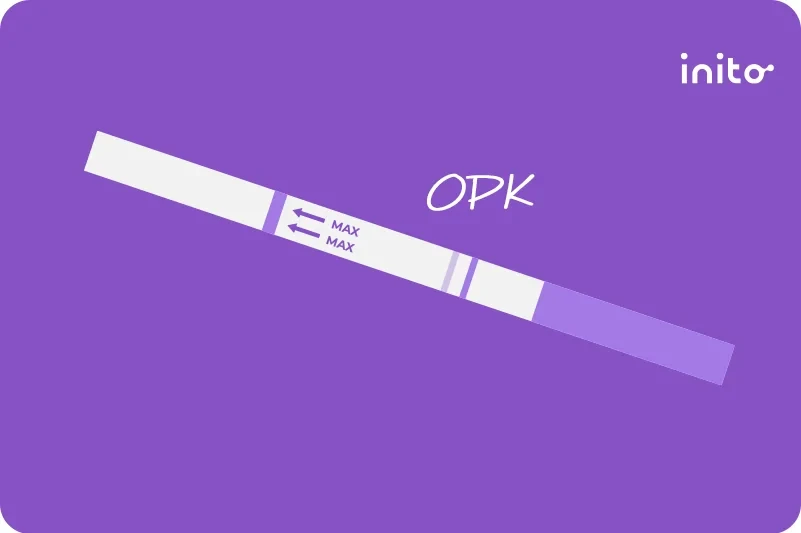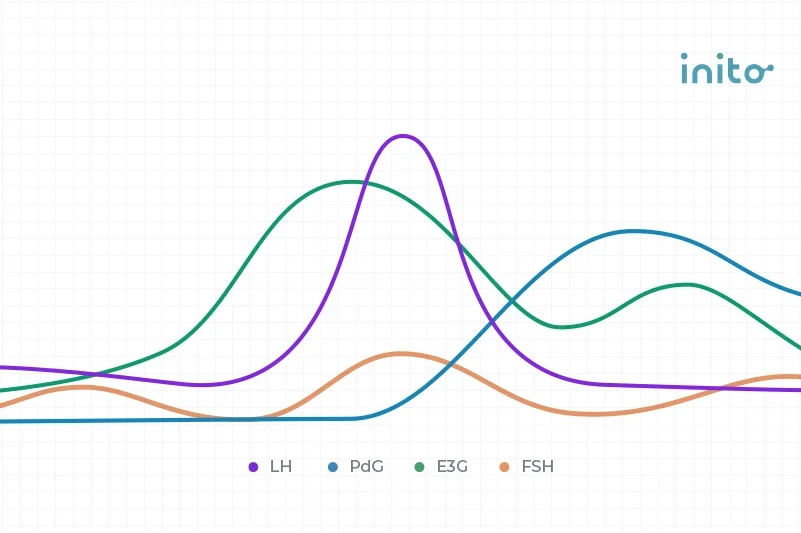Content table
Remember the old wives’ tale that you could get pregnant at any time? Well, it’s not entirely true, as you need a positive ovulation test to get pregnant at that time!
With this great news, you’d probably wonder what you need to know before your test day, including how long you will remain fertile after a positive result.
Well, we’re here to explain the nitty-gritty details about these test results, including your chances of getting pregnant.
What is a positive result on an ovulation test?
First things first, you need to get an ovulation test done. An ovulation test measures the luteinizing hormone (LH) level in your urine to tell when you will ovulate. Based on the test result, you can analyze whether you got a positive or negative result.
There are different kinds of ovulation tests today based on price, accuracy, or methods of operation. The most common ones are test strips and digital devices that show the increase in LH in the urine. Think of it as a pregnancy test.
These ovulation tests are either threshold-based tests or they measure the actual levels of the hormones.
The threshold-based test strips detect the levels of Luteinizing Hormone (LH) in the urine. If your LH levels surpass the test’s threshold, you get a positive result on the ovulation test.
The only drawback in these tests is that in cases like Polycystic Ovary Syndrome (PCOS), you may get false-positive results due to the constantly elevated levels of LH.
The tests that measure the actual levels of your hormones give you a picture of all your hormones. This picture is irrespective of whether you fit in the average or not.
It helps if you have PCOS, erratic hormonal levels, and other pituitary disorders. With the actual levels of your hormones, you can identify your fertile window and track ovulation with ease.
Some tests are analog, and some are digital kits. Analog tests give you the results in the form of two dark lines, which can be confusing to decipher.
The digital kits give you a clearer picture of the result as a plus sign or a smiley for positive results.
Most home ovulation tests show a rapid increase in LH in urine which happens 24 to 36 hours before ovulation. With the Inito Fertility Monitor Kit, you can track the surge in FSH, LH, and estrogen levels to track your fertile window along with PdG (a urine metabolite of progesterone) levels to confirm ovulation.
A positive test result shows a spike in LH and predicts ovulation to begin within the next 24 to 36 hours.
How long am I fertile after a positive ovulation test?

Bottom line? Not long.
The egg survives in your body for about 24 hours after it has been released. Add to that the 36 hours between a positive ovulation test and the actual ovulation.
This means you have about 60 hours or 2.5 days in each cycle for pregnancy to be possible. Once you miss this window of opportunity and the egg dies, you’ll have to wait for the next month.
Remember that you should have sex before your ovulation to increase your chances of fertilization. An egg lives for only one day while the sperm lives for 3 to 5 days.
Hence the sperm would still be in your body when you ovulate. This period of 6 days is known as the fertile window.
How to make the most of your Fertile Window to get pregnant?
Your fertile window is the few days in your cycle when you can successfully get pregnant.
Experts have been able to tell that this window lasts for approximately six days.
To add to this, a study of more than 98,000 women discovered that the chances of getting pregnant were highest during the five days before ovulation, with the highest probability on the day just before ovulation.
Tracking your fertile window has never been easier now that you can use fertility monitors like the Inito fertility monitor—designed to measure the levels of hormones accurately.
No other kit measures all four hormones – FSH, LH, estrogen, and PdG (a urine metabolite of progesterone), on a single test strip except for Inito. So by measuring FSH, LH, and estrogen, you can track your fertile window, and with PdG (a urine metabolite of progesterone) levels, you can confirm ovulation.
Getting pregnant after a positive ovulation test
Throughout this article, we have seen how and when you can expect a positive ovulation test.
Now that’s done, you may be wondering what your chances of getting pregnant after these results look like. The good news is your chances are high if you timed your intercourse!
A study showed that the likelihood of getting pregnant is higher when you had sex five days before ovulating and on the day of ovulation.
And here comes the jaw-breaking news: you have a super-duper high chance at getting pregnant if you have sex with your partner a few days before the positive ovulation test!
Here are your chances based on the day you have sex:
- 3 days before ovulation: 27%
- 2 days before ovulation: 33%
- 1 day before ovulation: 41%
- Ovulation day: 20%
- 1 DPO: 8%
You can see that your chances increase as you approach your ovulation day but decrease steeply after. This boils down to the reason why you should regularly track your cycle.
How to track my ovulation?
You can track your ovulation in different ways. First, you have to consider the regularity of your cycles and how accurate you are in tracking your ovulation.
Here are ways to track it:
- Using a calendar: Although this method is the easiest, it requires a steady cycle. In reality, it tracks your period but can only predict ovulation and not confirm that ovulation has occurred.
- Record your basal body temperature (BBT): BBT is your body’s temperature when you are resting. To track your BBT, record your temperature first thing in the morning.
Do this daily, and you’ll notice an increase after you have ovulated. This method cannot help increase your chances of conceiving since you come to know about your ovulation only after you have ovulated. - Using an ovulation predictor kit: Think of these kits like your home pregnancy tests. They check your urine for luteinizing hormone (LH), which shows if you’re ovulating.
An increase in LH tells you that you’ll ovulate in the next 24 to 36 hours.
If you’re trying to conceive, then you should have sex within the next few days. Inito is an advanced version of these kits that measures FSH, LH, estrogen, and PdG (a urine metabolite of progesterone) to accurately tell you when you’re ovulating and also confirm if you have actually ovulated or not.
What to do after I get a positive result on my ovulation test?
Even though ovulation tests are perfect for predicting ovulation, they don’t give you more information. Confirming that you ovulated helps you, especially if you want to stand a chance at conceiving.
Once you have a positive ovulation test, get busy with your partner and follow the two-week wait to get a pregnancy test done.
Most experts recommend that partners have sex twice or thrice in this fertility window to increase their chances of getting pregnant.
I’ve gotten a positive ovulation test and timed sex accordingly… now what?
If you timed sex with your partner after a positive ovulation test, all you need to do is wait. The two-week wait ends at about 12 DPO or 14 DPO. Once you are there, you can then get your pregnancy test done to confirm conception.
Summary
- A positive ovulation test result shows a spike in LH and predicts ovulation to begin within the next 24 to 36 hours.
- The fertile window lasts for six days.
- An egg lasts in the female body for 24 hours, while a sperm lasts for about five days.
- Your likelihood to get pregnant increases as you approach your ovulation day and decrease steeply after ovulating.
- Use the Inito Fertility Monitor to confirm your ovulation and determine your fertile window.
Was this article helpful?
- Wilcox, A.J. et al. (2003). The timing of the “fertile window” in the menstrual cycle: day-specific estimates from a prospective study. BMJ.
- Faust, L. et al. (2019). Findings from a mobile application–based cohort are consistent with established knowledge of the menstrual cycle, fertile window, and conception. Fertility and Sterility.
- Leiva, R. A. et al. (2017). Urinary luteinizing hormone tests: which concentration threshold best predicts ovulation? Front Public Health.
- Dunson, D.B. et al. (1999). Day-specific probabilities of clinical pregnancy based on two studies with imperfect measures of ovulation. Human Reproduction.
- Mesen, T.B. et al. (2015). Progesterone and the luteal phase. Obstet Gynecol Clin North Am.












